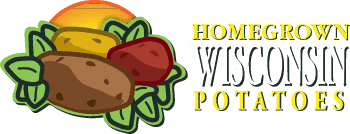
Over the past 170 years, naturally diverse native landscapes now face threats from invasive
species. What has happened in the last 170 years? Rural and urban development, agriculture, suppression of fires, drainage of wetlands, the planting of pine plantations and logging have taken their toll. Because of that, Wisconsin landscapes are significantly less diverse in plants, insects and animals. This lack of diversity makes the landscapes more susceptible to fungal diseases and they are more easily overrun by invasive species.
For that reason, Wisconsin potato growers are working to restore native lands. By doing so, we can improve biodiversity, pollination, soil fertility and nutrient cycling while improving water quality and wildlife habitats.
One way we do that is via prescribed burns. Since the mid-nineteenth century, humans have done what they can to prevent fires. The problem is this — fire is a natural regenerator for both oak-pine barrens and dry-mesic prairies. Plants in these ecosystems are adapted to fire and their growth is, in fact, enhanced by fire. Fire reduces woody vegetation that creeps into barrens and prairies. It also stimulates the growth and seed production of many native grassland plants.
For Wisconsin potato growers, prescribed fires are done on an as-needed basis
as determined by a team of University of Wisconsin researchers — burn too often and you
can reduce biological abundance, possibly reduce the carbon storage function of the
ecosystem and negatively impact butterfly populations, such as that of the Karner Blue butterfly. Done right, prescribed burns can help eliminate non-native invasive species while promoting the growth of fire-adapted plants native to the area. This, in turn, enhances biodiversity and provides adequate food and shelter for a variety of wildlife native to the region.



